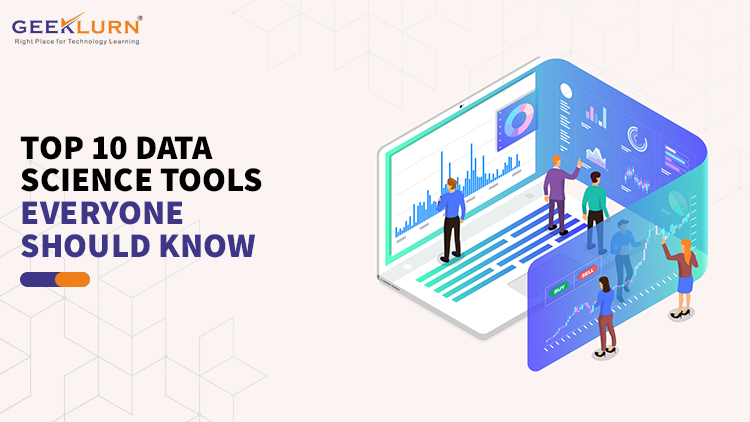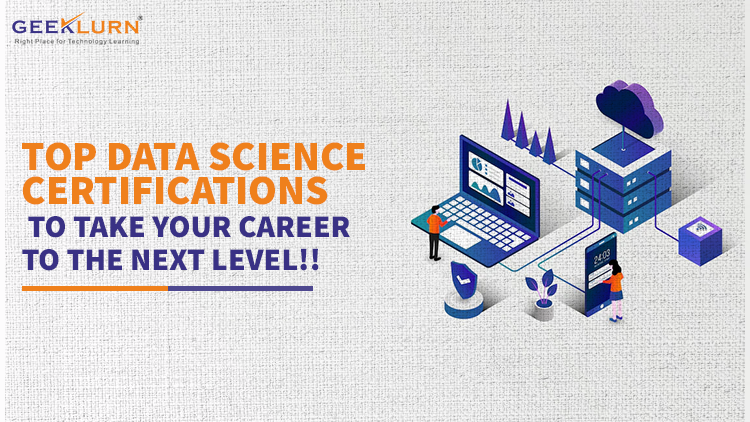Data science is a career with amazing opportunities in India, with the average salary ranging between ₹4.5 lakhs and ₹25 lakhs. Data scientists transform massive datasets into actionable insights, which can have a profound impact on various industries and economic sectors. These data professionals make the best use of their statistical, analytical and programming skills to collect, analyse and interpret data, identify issues and propose a solution for effective business decisions.
The big data industry in India is expected to account for 32% of the global data analytics market by 2026 and reach a value of $20 billion from $6.9 billion in 2022. The demand for data scientists is at a record high in India, with analysts expecting the nation to have over 11 million job openings by 2026. So, choosing a career in data science could be a lucrative option.
The good news is that there are plenty of data science tools that make the job of a data scientist. They do not even require the knowledge of multiple programming languages. The top tools for data science come well-equipped with rich functionalities, predefined algorithms and a simple GUI.
Table of Contents
Here’s a list of data science tools that data scientists generally use:
1. Statistical Analysis System (SAS)
This closed-source proprietary software is used to analyse, report and retrieve statistical data. It is also used for data visualisation. SAS is easy to learn and use, comes with high data security and ensures accurate output. It also offers interactive reports and dashboards, with numerous functions that cover everything, from automated forecasting to location data. It has gained popularity for its suite of tools dealing with diverse areas, including clinical trial analysis, statistical analysis, data mining, business intelligence applications, time-series analysis and econometrics. This explains why it is one of the top data science tools in demand.
2. BigML
It is a scalable, consumable and programmable machine learning platform that helps ease the processes of automating and solving Regression, Classification, Time Series Forecasting, Anomaly Detection, Association Discovery and Topic Modelling tasks. The top advantages are that it can run in the cloud or on-premises and take predictive data to turn it into practical applications that can be used by anyone.
3. MATLAB
This is one of the top tools for data science that helps to access and analyse data from a vast variety of sources. It offers a single, high-performance environment for working with big data. This makes it easy to scale to clouds, clusters and big data platforms like Spark and Hadoop. Data scientists, engineers and domain experts can develop their own data and analytics applications. They can use familiar MATLAB functions and syntaxes to work with massive data chunks regardless of memory capacity.
4. Apache Hadoop
This open-source framework can process and store huge datasets (petabytes and gigabytes). It uses the clustering technique, where multiple computers analyse chunks of data simultaneously and quickly. While Hadoop uses MapReduce to process data, Spark uses resilient distributed datasets (RDDs). It easily scales to accommodate large amounts of data across thousands of Hadoop clusters and uses the Hadoop Distributed File System (HDFS) to store data and provide parallel computing. Hadoop’s strength lies in its fault tolerance and high availability even during unfavourable circumstances.
5. Apache Spark
This is one of the top open-source tools used in data science for big data workloads. It works with in-memory caching and optimised query execution. This is beneficial for fast analytics queries against any size data. The top benefits are speed, ease of use and a unified engine. Its machine learning APIs enable data scientists to make accurate predictions using the given data. In short, it is a de-facto tool for Big Data developers and scientists.
6. D3.js
This is a JavaScript library developed by Mike Bostock. It is used for dynamic and interactive visualisations and manipulating documents based on data. The visuals are created using HTML, CSS and SVG, and can be easily viewed on a modern browser. The top benefits are that it is ideal for client-side Internet of Things (IoT) interactions and is based purely on JavaScript.
7. Excel
Excel is an excellent primary analytics tool for modelling. It helps in the field of data science for filtering, sorting, trimming, merging and cleaning data, along with naming and creating ranges. Visual Basic for Applications (VBA) can be used, and charts and pivot tables may be created. Not only can it be connected with SQL, it can also be used for data manipulation and data analysis. Excel is simple, well-known and easily accessible.
8. Google BigQuery
This is a cloud-based data warehouse provided by the Google Cloud Platform. Data analysts can use ML through SQL skills and tools. Users can create and execute machine learning models in BigQuery by using standard SQL queries. It uses Google’s infrastructure-based processing power against append-only tables. The development speed can be significantly increased by eliminating the need to move data.
9. Tableau
This is a collection of different data analytics and Business Intelligence tools that allow users to collect data from numerous sources in both unstructured and structured formats. It is generally used as a data visualisation tool, and familiarity with this data science tool can give you an edge while applying for data scientist and other related jobs. The visualisations mainly include waterfall charts, bump charts, bullet charts, bar charts and tree maps. One of Tableau’s major benefits is its ability to interact with different databases, spreadsheets, online analytical processing (OLAP) cubes, etc.
10. MySQL
This is a real-time, open-source transactional database based on the Structured Query Language. The cluster allows users to cater to database challenges of next-generation cloud, web and communication services. The top advantages are that it can work with programming languages like Java and can easily be stored and accessed in a highly structured manner.
Enhance your chances of success as a data scientist with the NASSCOM and IBM-powered GeekLurn Data Science Architecture Program. It includes 320+ hours of live interactive sessions with eminent data scientists. The program will help you gain familiarity with the data science tool list. At the end of the course, you will have expertise in Testing, Hadoop Development, Administration, Statistical Computing and NoSQL Applications. These make you job-ready for a variety of data science job roles.






